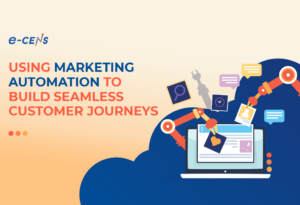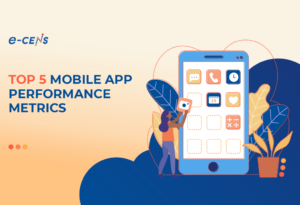Many marketers have this mystical vision of a customer journey experience like a novel-based journey, where everything is pre-determined, and you know where everything will fall.
Is it actually like this? No! I was once guilty of thinking the same, but I feel no shame in admitting my wrongs and discussing them.
But the more I went through customer experiences myself, the more I saw it couldn’t be further from the truth, so I returned to the drawing board.
And the first question I had was, “How can I map the customer journey if I want to improve it?”
And so into research mode, I collected all the info I could on how to map your customer journey to make improvements on it later.
Understanding the Customer Journey
One of Albert Einstein’s quote sums this part exceptionally well, in it he said:
“Any fool can know. The point is to understand.”
This could sound a little harsh, but it’s true.
We’re now looking at screens and dashboards expecting people to fall into a template we have in mind, and looking at customers as just numbers and names don’t make things better.
But we can use stages to help us better understand our customers, their needs, what they look for, and how you can give them the best experience possible.
To understand customer journeys better, most up-to-date information and tips are directly from experts who are on the frontlines in researching and optimizing customer journeys.
My two guests are Daniel Parris, a Data Science Consultant working at DoorDash and one of their first 150 employees, and Katya Ryabova, a customer researcher & product marketer with more than 12 years of experience in that field.
What are the stages of Customer Journey?
Customer journeys can be divided into five or six stages, but there are common elements you’ll find in all of them. They are:
- Problem Stage
- Awareness Stage
- Consideration Stage
- Action Stage
- Retention Stage
- Loyalty Stage
1 – Problem
Most maps I’ve seen myself don’t have problems included. Katya has pointed this stage out as one of the most important stages to look out for when building your customer journey experience.
Think about it: you already do it as a part of your consideration stage but without putting much thought into it.
Here’s why, in Katya’s words:
“Before awareness, there has to be a realization that there’s a problem. Right?
Before the customer is aware of what options are available and before they begin researching potential solutions to the problem.
They have to realize what the problem is.
And it’s helpful to know that or at least have an idea of how customers or users realize that they have a problem, to get them early.”
We usually base our awareness on the problem, but we don’t isolate the problem, which is a considerable overlook.
2 – Awareness
This is where your customers know about you or become aware that your product or service exists.
What makes this stage unique is your customer might have many different touch points with you, like seeing you on his feed on social media, whether organically or through paid ads.
Your goal is to invoke curiosity in your customers to know more about your offer, leading them to the next step.
3 – Consideration
Now that your customers have become aware that your product or service exists, you want to capture their attention as they search for more information about your product and your competitors.
Here, your goal is to get your content in front of customers. Things like case studies and demos play a crucial role in this stage.
4 – Action
In this stage, you’ve made it to the customers’ shortlist. Customers actively compare different options, weigh the benefits and drawbacks, and assess how well the offering aligns with their needs and preferences.
They may seek additional information, request quotes or demos, read customer testimonials, or engage with sales representatives to address any remaining questions or concerns.
Your goal in this stage is to help customers make a well-informed decision and move closer to purchasing or taking the desired action.
5 – Retention
When it comes to retention, your goal is to keep customers coming back and prevent churn or at least reduce it as much as possible, and there’s nothing such as zero churn.
Here is where your customer journey experience reaches its bottleneck. If you reach this stage but fail to deliver, you won’t just be losing one customer; you’ll be losing a bunch of potential customers who would be referred to you by that happy customer, and that’s why loyalty is hard to achieve.
So, always focus on delivering the best possible customer experience, address customer concerns as soon as possible, and make sure that you always give your customers a positive experience.
6 – Loyalty
This is one of the most important stages to focus on when considering customer experience right after retention.
Why? Simply because the cost of a customer referring another customer is extremely low compared to traditional CAC “customer acquisition cost”.
So why pass on that opportunity to bring down your acquisition cost and build new relationships with potential customers more effectively?
Now that we’ve gone through the five stages of customer journey experience, we come to the question, “How do we make it better?”
As I said, I interviewed two experts to get to the bottom of this issue, and here are some tips they shared with me.
5 Tips to Create a Robust Customer Journey Experience
Tip #1: Start with Tracking
The first thing you need to do is track your customer’s journey and assess their experience.
I know it sounds like basic advice, but as an analytics agency, this step is often overlooked or hastily done without digging into why things happen.
If your customers are having a good experience, ask yourself why. And on the other hand, if they have a bad one, the same question should be asked!
This will help you identify what matters to your customers and what you should focus on.
But should you track a customer journey stage by stage or as a monolithic thing?
I asked Daniel this here what he had to say:
“I believe the answer to that question typically relies upon where the company is in its growth stage.
So, for a start-up, they often focus just on counting statistics, like how many new users we have that are placing orders, for example.
Once it gets to the point where it’s acquired enough customers, it’ll be like, ‘How do we get these people to place a 2nd order?’ and so on”.
Tip #2: Do Customer Research
First, you observe, then you confirm.
That should be how you approach improving the customer journey experience, especially if you’re a small business.
Sometimes, analytics doesn’t tell you the complete picture. It points out if something is causing problems or making people love your product or service, but it lacks a human touch.
And while this might not be feasible if you’re a large corporation, you could and should do it as a small company.
Frameworks like JTBD “Jobs to be Done” are a massive help in customer research; they help you uncover insights into why customers buy and what influences their decisions.
You could check our partner’s guide on JTBD and our quick guide on CRO if you want to get up to speed.
Tip #3: Don’t Try to Boil The Ocean
One of the things many companies get wrong is trying to do everything everywhere at once. Movie reference intended.
And by doing that, you dilute your impact; it makes everything you do seem half-backed, and no one likes that.
When I talked with Daniel and Katya, they suggested that you approach each stage using a waterfall method.

If you’re unfamiliar with the waterfall method, it’s a tech method designed to make processes go smoothly, and every stage gets the attention to detail to be done as close to perfect as possible.
So focus on Awareness, Consideration, Action, Retention, and lastly, Loyalty.
Build each stage for success and continue supporting it as time goes on while you focus on the next stage.
That way, you build a robust journey experience that helps you be on your customers’ good side.
Tip #4: Have Someone Own Every Stage *If Possible*
This tip isn’t for everyone, but if you have the resources, you should have someone who owns every stage of the customer journey.
Why?
It helps you break your OKR or KPIs into measurable metrics rather than looking at the customer journey experience as a monolithic thing.
So you’ll have a marketer or an analyst who focuses on acquisition, which is the most important and tracked metric for many companies and startups.
That marketer could then work on a plan to acquire more customers and work on it with the rest of the marketing team.
Customer success is mainly responsible for ensuring customers have a great experience when dealing with you if you have an issue or a problem.
Sales are at the forefront when it comes to consideration because they’re the ones who’re in touch with the potential customers, helping them convert.
Do you see where I am going with this? If you’re at a big company, you’re probably doing this already, and you have people responsible for each stage, but they don’t think of it this way.
On the other hand, if you’re a small business, you’d focus on 1-2 stages at a time, making sure everything goes smoothly to help scale your business and operations, thus hiring people to handle such stages.
Tip #5: Focus on Metrics, not Tools!
I’ve seen this issue a lot, especially with digital transformation, as my colleague Patrick Soch and I love to yell about this when it comes to digital maturity on our Digital Distribution Podcast.
Big corporations and even small startups go deep into the weeds of analytics, trying to break everything down to their molecular level.
Eventually? They don’t achieve anything!
So don’t be lost in analytics. Choose a solution that gives you the data you need, is nothing too fancy, and doesn’t waste your time trying to redefine analytics.
Conclusion
Customer journey experience is essential to any business because you have to acquire, retain, and foster long-term relationships with them.
But as with everything in business, it all boils down to your priorities and how you keep your hand on the pulse.
When it comes to analytics, things could be tricky. However, if you want an analytics strategy and implementation that gives you a bird-eye view of metrics at every stage of your customer journey experience, look no further.
At e-CENS, we know analytics by heart, so whether you’re still at the start and haven’t figured stuff out or you’re an established enterprise with tons of data that you can’t break down to get to the insights, reach out to us.




